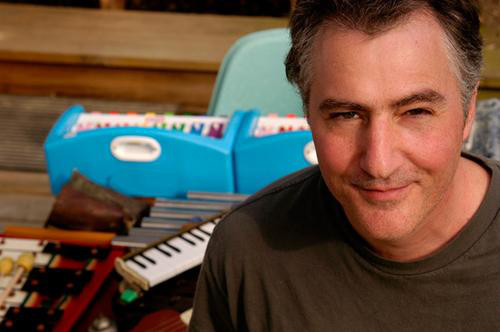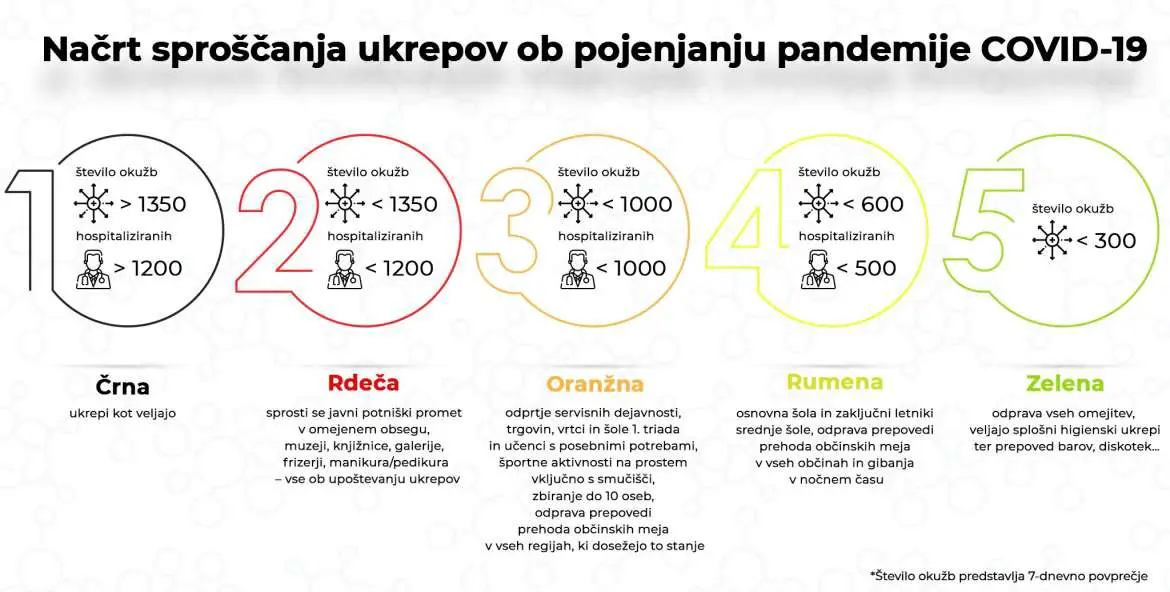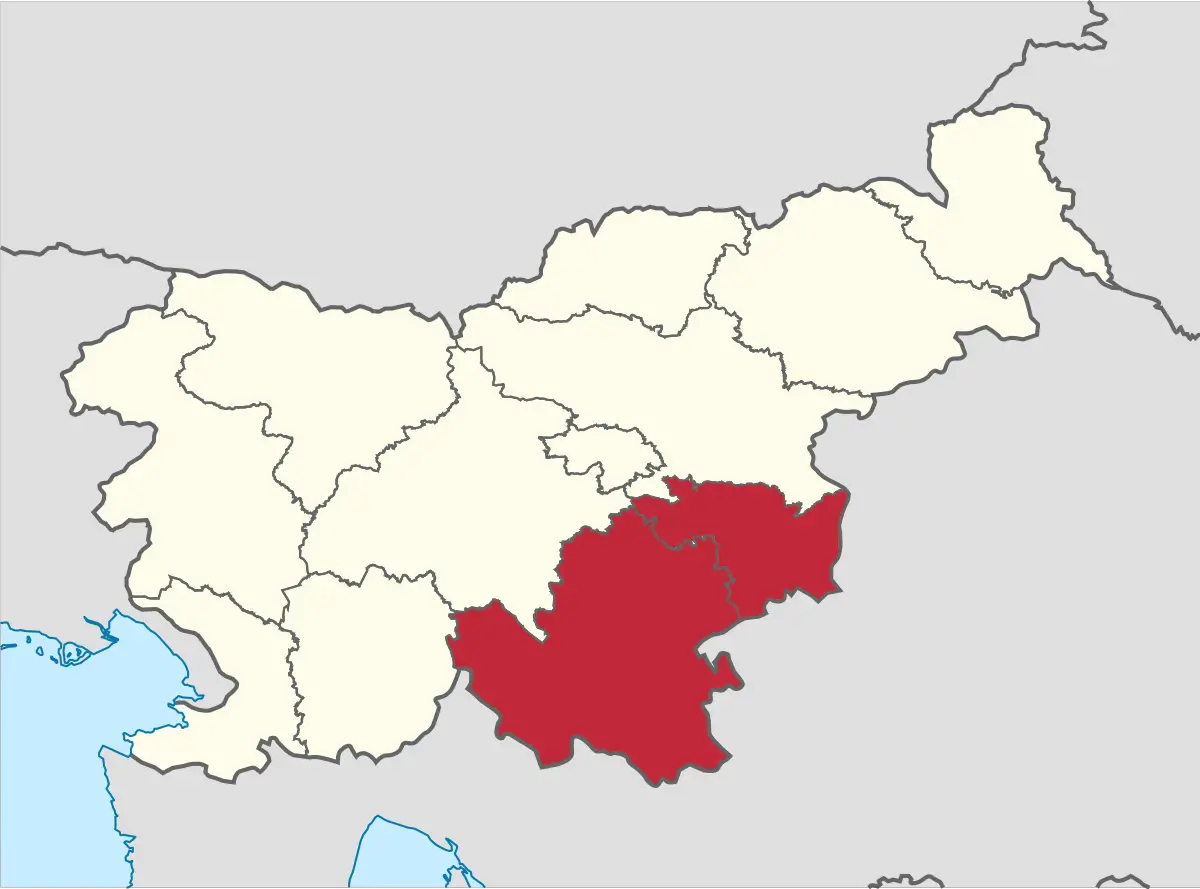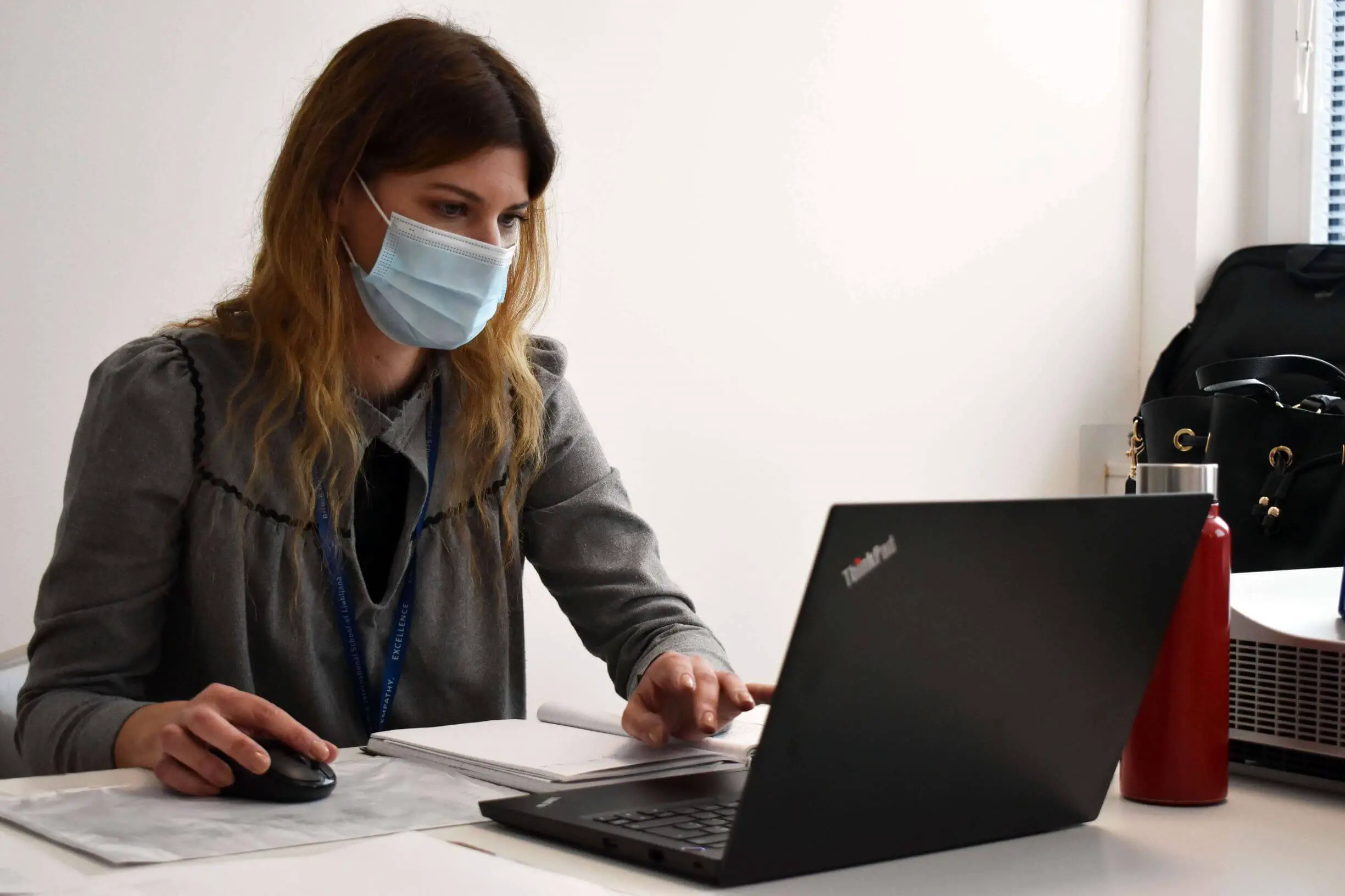Lifestyle
STA, 12 March 2021 - Radio Študent has avoided losing the funding from the University of Ljubljana's Student Organisation (ŠOU) entirely, but says that the EUR 84,000 it will receive for this year nevertheless represents only 70% of last year's sum from ŠOU's budget, which will not be enough for the radio station to function smoothly.
The small independent radio station was at risk of losing funding from the organisation altogether as the first draft of the budget of its founder ŠOU, adopted in early January, envisaged no funds for Radio Študent.
The new version of the budget, adopted yesterday, sees EUR 84,000 earmarked for the radio station, which its the management and editorial board said today posed a threat of serious consequences.
A cut from last year's EUR 120,000, the sum is not sufficient for Radio Študent to function normally, as the core journalist activities, the training programme and many other radio projects will be severely hampered.
Radio Študent added that there were no quick solutions to compensate for the budget cut and that the "development plans for the radio will have to give way to innovative survival strategies due to the reduction of funding by the founder".
The management expects struggle for survival and says it would need to work hard to preserve independence and financial stability of the station, whose survival has been demanded by "almost the entire relevant public home and abroad".
Radio Študent added that the financing problem did not stem from the current financial situation of the founder, but that it was "planned destruction and disciplining of the media outlet that does not bow to the ruling student elite".
Funding of the radio station, launched in 1969, has been on decline for almost a decade. In 2012 it received EUR 230,000, but only EUR 120,000 last year when, during the Covid-29 epidemic, the radio station intensified its reporting and programmes.
The radio station has more than 200 young contributors, who make 17 hours of live radio shows a day.
STA, 12 March 2021 - The government adopted a revised national vaccination strategy at a correspondence session on Friday, making some minor changes after it revised the document adopted on 3 December at the start of March. The strategy now says vaccines will be provided to all residents with permanent or temporary residence, not just to Slovenian citizens.
Soldiers were meanwhile added to the nine groups to be prioritised for vaccines together with police officers, while previously only soldiers leaving for missions abroad were on the priority list.
Earlier in the day, Slovenian Olympic Committee (OKS) secretary general Blaž Perko said the OKS would like Slovenian athletes who will go to the Tokyo Olympics to be vaccinated earlier than planned now.
Under the vaccination strategy, they are in group eight of the nine groups, meaning they will get a jab just before the games, he told the STA.
Perko believes this would be too late for the vaccine to be effective while posing a risk of "potential bodily reactions", so they would like Tokyo candidates to be placed at least at the level of diplomats.
"As ambassadors of the state, athletes represent the state at the international level, so they have to travel and thereby risk getting infected and transmitting the disease".
The strategy was also upgraded with the data about the vaccines in line with the information provided by the country's Agency for Medicinal Products.
What is more, the Oncology Institute in Ljubljana, the country's main cancer treatment centre, was added to the list of vaccination centres.
When the strategy was first revised on 1 March, it was announced that 61 vaccination centres were envisaged, including 13 in hospitals.
Today's revision was needed to bring the document in line with "certain new scientific circumstances related to the vaccines" and to harmonise it with the 7th anti-coronavirus stimulus package, the press release from the Government Communication Office said.
STA, 12 March 2021 - Weddings of up to 10 persons are permitted again across Slovenia bar the coastal Obalno-Kraška region, where the number of participants is capped at three or four persons, including the bride and groom, the Ministry of Labour, the Family, Social Affairs and Equal Opportunities said on Friday.
Minister Janez Cigler Kralj has notified all the administration units in the country of the decree, the ministry said, adding that Covid prevention measures must be observed at weddings.
The red-coded Obalno-Kraška region remains the area with the worst epidemiological situation in Slovenia. Any gatherings are hence banned there, so the decree envisages a stricter protocol to be followed in the event of weddings.
The number of participants is capped at three, including the bride, groom and marriage officiant, or four persons if an interpreter is needed in line with the law.
STA, 12 March 2021 - Exactly a year ago, a coronavirus epidemic was declared in Slovenia after the number of infections jumped to almost a hundred only a week after the first infection. Slovenia was in the epidemic for more than 60% of the last year.
The epidemic was declared by the then Health Minister Aleš Šabeder, who left the ministry the next day.
On the same day Slovenia closed its border with Italy, where the Covid-19 situation was the worst at the time.
The outgoing government also decided that schools on all levels close the next week and that only emergency cases be processed in healthcare.
Not long after that, the country went into a full lockdown to prevent further spreading of the virus, and people's lives changed drastically.
With strict measures and fear over a new, unknown virus, Slovenia was relatively successful in overcoming the first wave of the epidemic, which lasted 80 days, until 31 May.
In the autumn, however, the situation deteriorated again, and the epidemic was declared again on 19 October. Initially for 30 days but then this was extended multiple times to last until this very day.
In line with the latest government decision, adopted at Wednesday's session, the epidemic was extended for another 30 days, meaning until 18 March.
During last autumn and winter, children were mostly learning from home. Primary schools were closed for more than three months and secondary school students returned to their classrooms only recently.
Shops selling non-essential products were also closed for months and only the main services were available. Bars and restaurants are still closed, except for outdoor tables in two regions.
Slovenia has so far recorded almost 200,000 infections and 4,192 deaths due to Covid-19.
Experts are placing all hopes in the vaccines, striving for at least 60% vaccination rate in the population.
The first effective coronavirus vaccine was registered less than a year since the outbreak of the virus and so far four vaccines have been registered in the EU, the last one getting the green light this Wednesday.
However, despite enormous investments in the development of the vaccines, pharmaceutical companies have been unable to deliver enough vaccine for all citizens, so the vaccination strategy gives priority to the elderly, who are the most vulnerable group.
In Slovenia residents and staff of care homes, which have turned out to be the main hotspots of the disease, have already received the vaccine and people over 80 years old have been mostly inoculated too. As a result, the number of Covid-19 patients in hospitals has started to decline and the epidemiological situation seems to be finally improving.
Yet the future seems uncertain. Although the second wave of the epidemic is not over yet, a third wave is being predicted. Three of the new, highly contagious strains of coronavirus have so far been recorded in Slovenia and the British variant seems to be spreading exponentially in central Slovenia.
The latest data on COVID and Slovenia
The Wisconsin-based theatre company Theatre Gigante, last seen in Slovenia in March 2019 with a production of Tarzan, "an exotic drama" by the Maribor-based writer, poet, playwright, singer and songwriter Rok Vilčnik, is now performing it’s latest production to a worldwide audience under full, COVID-compliant conditions.
Inspired by The Decameron, Boccaccio’s classic collection of tales told by folk isolating to avoid the plague, Theatre Gigante has created a series of performances hosted online under the title A Cosmic Fairy Tale A Day Keeps The Doctor Away. This is composed of 31 fairy tales from the mind of Vilčnik, as told by storytellers from Milwaukee to California, Colorado to Chicago and Boston, Taiwan to Italy and France.

Rok Vilčnik. Photo Urška Lukovnjak CC-by-SA.-3.0-unported
The stories – which touch on hopes and dreams, beginnings and endings, many questions and few answers – cover a wide range of moods from the playful to philosophical. Each is from two to 12 minutes long, and is available to view on Vimeo throughout the month of March, to be enjoyed over days or binged in an evening or weekend.

Photo: Theatre Gigante
Rok Vilčnik’s Slovene texts have been translated by students of Translation Studies at the Faculty of Arts, the University of Maribor, lprimarily Ana Arnejčič and Nejc Golob, under the mentorship of Professor Melita Koletnik. The translations were then revised and edited by Isabelle Kralj. The production is supported by visual design from Justin Thomas and music by Frank Pahl, seen below.

Tickets cost $31, or just under €26, and for that you gain access to the performances online and can enjoy them for the rest of the month, becoming more familiar with the work of a local author, while also strengthening the links between Slovenia and the world. Tickets can be found here, while you can read more about the show here.
STA, 11 March 2021 - Slovenia saw its average daily increase in coronavirus infections over the past seven days drop to 705 after another 860 people tested positive on Wednesday, as Covid-19 hospitalisations fell to 453. On the downside, ten more Covid-19 patient died, data released by the government show.
Of the 5,786 PCR tests performed yesterday, 14.9% came back positive. In addition, 25,741 rapid antigen tests were also performed.
The number of patients hospitalised with Covid-19 fell by further 32 to 453 after 29 new admissions and 51 discharges yesterday. Ninety patients required intensive care, two fewer than the day before.
The 7-day average of new cases dropped by 23 from the day before to 705. For the country to move to a lower, yellow tier of coronavirus restrictions the average would have to fall below 600 after Covid hospitalisations have already dropped below 500.

The cumulative 14-day incidence per 100,000 residents is at 496 and the 7-day at 255.
Commenting on the situation at the press briefing on Thursday, director of the National Institute of Public Health (NIJZ) Milan Krek said Slovenia was still "deep in the epidemic", appealing to the public to stick to precautionary measures.
He noted the rising infection rates globally as a result of new coronavirus variants, assessing the countries were slowly descending into a new pandemic wave.
Despite the slow decline in transmissions in recent days, he said the curve was stagnating, expressing concern about a repeat of a similar situation in November when after a stagnation the curve started to climb up again at the end of last year.
Noting a slow increase in infections at schools, Krek said "additional measures might be needed if the situation deteriorates", but the goal was for pupils to finish school year in classrooms.
NIJZ data show that Slovenia has so far conformed 198,234 coronavirus cases, of which 10,445 are considered active infections.
Data from the tracker site covid-19.sledilnik.org show that a total of 3,918 Covid-19 patients have died.
However, NIJZ data released on Monday show that 4,156 patients with Covid-19 had died by Sunday, 7 March. Adding Monday's seven fatalities, Tuesday's four and Wednesday's ten to that figure, brings the death toll to 4,177.
The latest statistics on COVID and Slovenia
STA, 10 March 2021 - The government has extended the majority of coronavirus restrictions by another week as it prolonged the state of the epidemic by another thirty days as part of its weekly review of measures on Wednesday.
"The current epidemic situation ... requires a new, temporally limited declaration of the epidemic across the entire territory of Slovenia," the government said.
The one relaxation the government opted for is allowing all construction services to reopen as of 15 March without the need for workers to be tested.
Builders have been allowed to perform services for business clients, but work for households has been suspended to reduce contact.
Construction companies have been urging the government to reopen at least for outdoor work.
There are also some changes on the red list of countries concerning individual regions in Denmark, Greece, Italy and Spain.
In neighbouring Italy, all regions bar Sardinia and Sicily are on the red list.
The government also debated a proposal by Interior Minister Aleš Hojs to shorten the 9pm-6am curfew but decided against any changes since the expert group did not endorse the proposal.
The decision will be on the table again in two weeks.
STA, 10 March 2021 - Slovenia confirmed 952 coronavirus cases on Tuesday, a drop of 21% from the same day a week ago, to push the 7-day average to 728 from 764 the day before. Covid-19 hospitalisations dropped below 500 again, but four patients died, data released by the government show.
Of the 6,017 PCR tests performed yesterday, 15.8% came back positive. In addition, 25,046 rapid antigen tests were also performed with all the positives there re-examined with PCR tests.
The number of patients hospitalised with Covid-19 dropped by 21 from yesterday to 485, 14 fewer than Saturday morning when hospitalisations fell below the 500 mark for the first time since late October.
Noting that development, Maja Bratuša, the government's Covid-19 spokesperson, said that 38 patients with Covid-19 had been admitted to hospitals and 55 discharged yesterday. The number of intensive care cases rose by two to 92.
With hospitalisations falling below 500, one of the two conditions for the country to move to a lower, yellow tier of restrictions at the national level has been met, but the 7-day average of new cases is still far from falling below 600.

Bratuša noted that the government was meeting today to re-examine the situation and potentially adjust measures.
Considering the situation in South-East Slovenia, one of the yellow-tiered regions, is deteriorating, while the situation in the red-tiered south-western region of Obalno-Kraška has been improving, there may be changes in the colour codes of the regions.
The national cumulative 14-day incidence per 100,000 residents is at 496. Obalno-Kraška still has the highest incidence, at 754.
Deputy chief epidemiologist with the National Institute of Public Health (NIJZ), Nuška Čakš Jager said Slovenia's 14-day incidence was still high in international comparison, with only the Czech Republic, Slovakia and Malta having a higher one in the EU.
She noted that only 15 infections had been detected in care homes over the past fortnight, most of those in newly admitted residents. She also noted a decline in fatalities.
A weekly analysis of transmissions among children, youth and teachers in education institutions shows the share of transmissions among kindergarten children remains constant at 1.72%.
The share is increasing somewhat at schools, which Čakš Jager described as a normal trend.
Slovenia has so far reported 197,374 coronavirus cases, with 10,446 still estimated to be active, according to the NIJZ.
Data from the tracker site covid-19.sledilnik.org show that a total of 3,908 Covid-19 patients have died.
However, NIJZ data released on Monday show that 4,156 patients with Covid-19 had died by Sunday, 7 March. Adding Monday's seven fatalities and Tuesday's four to that figure, brings the death toll to 4,167.
NIJZ data as of 9 March show that a total of 150,144 people have received the first dose of a vaccine against Covid-19 and 63,908 have received two.
All the latest data on coronavirus and Slovenia
STA, 8 March 2021 - Women in the labour market are frequently faced with precarious work forms, discrimination, harassment, sexism and do a lot of unpaid work, trade unions have warned on International Women's Day.
Young people in particular, especially women, are more subjected to precarious work forms. About 80% of females aged between 15 and 25 have fixed-term employment contracts, while for men the share is under 60%, said Mladi Plus, a union representing young workers.
Poverty has become more widespread among young women, mainly due to high unemployment rate in this group and precarious work forms. The unemployment rate among women aged between 25 and 34 is about three percentage points higher than among men.
"Employers often expect them to go on maternity leave, to be on sick leave more often (to provide for children or elderly) and to put family life before their job," the unions said, noting that employers saw this as risky and potentially costly, so they did not hire women as much.
The access to services in elderly care is increasingly restricted rather than being expanded, which means more unpaid work for women because of socially determined roles, and more absence from the labour market.
The state is trying to tackle the issue of higher unemployment of women with tertiary education with subsidies for self-employed women, which seemingly reduced the unemployment rate but does not solve the problem, the union said.
It also pointed to allegations of discrimination and bullying at work. Women looking for a job are often discriminated against and employers sometimes demand that they sign a statement that they will not get pregnant in a certain period.
Women are also still discriminated against when it comes to pay - with the pay gap increasing from 3.3% in 2011 to 9.3% in 2018. In 2016, women in the EU on average received 16.2% lower pay than men.
Mladi Plus also pointed to some unacceptable demands by employers, for example in the hospitality sector, where women are sometimes required to wear short skirts and low-cut tops, and to sexual harassment in institutions that should provide for education and equal opportunities and rights for all.
The union also warned of poverty among older women, who receive lower pension than man because the had also received lower pay.
The Covid-19 epidemic has also hit women hard. Most women who have been absent from work during the epidemic have been on furlough and more women than men have lost their jobs since the start of the epidemic, official statistics shows.
"The measures adopted by governments harm women by deepening the differences between the sexes in terms of unemployment, household choirs and financial security," the union said.
Moreover, jobs that are most exposed to infections are dominated by women in the sectors such as healthcare, social protection, education.
The ZSSS trade union confederation has joined a campaign by the European Trade Union Confederation (ETUC) urging countries on 8 March to ratify the convention of the International Labour Organisation (ILO) against violence and harassment at work.
The union said that the epidemic had made the situation worse for women at work as well as at home, as domestic violence was also on the rise.
The ZSSS said it had called on the Labour Ministry and the government on several occasions to ratify the convention as soon as possible. This would place Slovenia among the first European countries to ratify it or start the ratification process, with Italy being the first one.
"It is the first international labour standard dealing with violence and harassment at work and envisaging efficient measures against it and victim protection," the ZSSS said.
The 8 March Institute, an NGO also warned of gender inequality on the labour market today, noting that the Covid-19 epidemic had aggravated inequalities as women took on the burden of home schooling and household chores, a survey conducted by the NGO has shown.
Particularly vulnerable are single mothers, said the coordinator of the survey, Mark J Užmah.
Tina Tomšič from the NGO said the most vulnerable group in Slovenia were single retired women, while self-employed women were also at risk because they could not go on maternity leave or take sick leave, which meant they did not enjoy labour rights.
A lot more data on women working in Slovenia is here
The British International School of Ljubljana has just received a delivery of new laptops for all staff at school. This investment is in preparation for further development of its online provision, use of technology in the classroom and to raise its high standards in the quality of education at school.
This fits in to the ‘Technology for Learning’ plan implemented by the school after the first lockdown. The plan has now been reviewed and enhanced to prepare for the future and any possible transitions to online learning that might occur. During the second wave of lockdown, the school introduced a more structured day of virtual lessons, further opportunities to learn away from the computer, reducing screen time, or increasing the availability of extra learning resources if required. It has been a process in an effort to continually improve, with the help of students, parents and staff at school, to refine and increase the high-quality provision of education.
They have worked with other schools in Slovenia – through virtual meetings, forums and presentations – to share best practices, experiences and successes of what teachers have implemented during this challenging time. With many educators across the country eager to help others with remote learning, this has been a major positive over the last 12 months.

The Principal Paul Walton with the new technology which will help all staff and students immediately at school.
The Principal, Paul Walton, commented “I am very excited about this project and very happy that this is the first time in the history of the school that we have been able to purchase this type of new technology for all our staff. I look forward to continue working with schools across Slovenia to share ideas and ways to improve the quality of education for all students”
Having these new laptops for each member of staff will facilitate opportunities to:
- Maintain and enhance the quality of education in class for students.
- Further develop the online learning platform and provision for students to consolidate learning and stretch ahead to challenge themselves.
- Use technology in the classroom more effectively to create new learning experiences for students.
- Use a high-quality device across the school to enable working from various areas around the campus and beyond.
With over 50 staff on site, this is a significant step forward to enhance and transform the learning opportunities for students at the British International School of Ljubljana. With over a third of the students at school from Slovenia, this is an excellent provision for staff to plan high-quality teaching materials that enable students to receive support at home, and opportunities challenge themselves further with online learning. A higher quality of online provision enables students to collaborate with others online and continue to work together to ensure they make outstanding progress.
Technology is used effectively and supports the learning of students, from the two-year-olds in the kindergarten through Primary and Secondary and up to the 18-year-old students in high school, who are able to apply to Slovene universities, others in the UK and across Europe and around the world successfully.
One of the staff planning language lessons
This initiative will have an immediate positive impact for the students, and will help in planning ahead further so the right infrastructure is in place for possible remote learning in the future.
The school looks forward to sharing its experiences with others and for students to feel the impact and benefit from these new devices. The school is a part of the Orbital Education group of schools worldwide. Find out more about the British International School of Ljubljana here.
Finally, the British International School of Ljubljana is hosting a Virtual Open Day for prospective families at 10am on Tuesday March 23 in English - find out more here if you are interested in joining the event. There is also a similar event in Slovene – Spletni informativni dan – on Thursday March 25 at 3pm, click here for details.
STA, 8 March 2021 - Secondary school students in years 1-3 joined their final-year peers on Monday as secondary schools fully reopened under model C, meaning half the class will be in school for a week while the other half will continue learning from home. The vaccination of teachers also started for those over 50 years old.
There are no changes for final-year secondary school students, who have been coming to school every day since mid-February, and also no changes for primary schools, with the only difference being the introduction of face masks for children in years 6 to 9 also in their classrooms and not only in communal areas such as corridors, halls, or dining areas.
"It's a great feeling, seeing your classmates and teachers after a long four months... taking tests will not be as much fun, though," Marko, a Maribor secondary school student told the STA.
Many students share his concerns about tests, with Eva, also a Maribor secondary school student, wondering how much she learnt during remote learning.
Teachers as well are happy to return to brick-and-mortar classrooms. Gregor Galeja, the head teacher of Gimnazija Celje Center said the school observed two holidays today: the International Women's Day and what is the already third first day of school in this school year.
After nearly five months of remote schooling the start of school in classrooms poses a unique challenge and additional stress, as this also marks a symbolic start to the final part of the school year, said Galeja, expressing hope that teachers will be able to facilitate a soft transition into the new routine.
Face masks are now also be mandatory for secondary schools, for both students and teachers.
Teachers will still need to be tested for the new coronavirus once a week.
This week, teachers will also receive vaccines, with those over 50 being the priority group, to be followed by others who have expressed interest in vaccination.
Health Minister Janez Poklukar expressed hope on Saturday that most will decide to get vaccinated and thus protect both their health and the health of children as well as help keep the schools open.
The SVIZ trade union of teachers expects more than half of teachers to express interest in vaccination.
Bars, restaurants in Posavje, SE Slovenia start serving outdoors
STA, 8 March 2021 - Bars and restaurants in two eastern regions, Posavje and South-east Slovenia, are once again allowed to serve food and drinks outdoor. Proprietors are happy that they may welcome patrons back, but are not pleased at all with the fact that this is only the beginning of the one-week trial period.

While Slovenia is in the orange tier of restrictions, both regions had figures last week that placed them firmly in the milder, yellow tier, where serving customers outdoor is allowed, so the government decided to temporarily allow bars and restaurants to reopen there.
Guests are served outdoors between 6am and 7pm and they will have to leave the establishment by 7:30pm.
If the number of infections increases, or if inspectors detect major violations, the government will close the bars and restaurants again.
Proprietors had to slash the capacities of their establishments to meet the safety requirements but are happy to be back in business. However, they do not like the idea of a one-week trial period.
"We had to organise, buy everything needed and get ready," Luka Retar, a proprietor from Novo Mesto told the STA. "I don't think it's right for the entire burden coming with a shut-down to fall on our backs again. We've almost had enough."
Rok Klobučar, another proprietor from Novo Mesto, said guests came in immediately after the opening this morning. He expressed satisfaction that bars have reopened and that staff is no longer on furlough.
He believes, however, that the one-week trial period is too short a time to show results. He believes a 14-day period would be more sensible, warning also that the number of infections may increase again due to other reasons, not bars opening.
Customers have to wear masks at all times, except when they are seated at their table, and staff will have to wear masks at all times and get tested for coronavirus weekly. Those vaccinated against coronavirus and those who have recovered from the disease will be exempted from the testing requirement.
Tables have to be three metres apart and no more than four guests are allowed at each table. The number of guests is also restricted based on the size of the terrace or garden. Guests are allowed to go inside only to use the toilet.
Since travel between municipalities is not restricted any more except for the Obalno-Kraška region, which is in the red tier, patrons from around the country will be able to wine and dine outdoors.
Slovenian restaurants have been closed for indoor service since mid-October. Both bars and restaurants were able to offer take-away service, and, since last month, restaurants were allowed to serve B2B guests indoors.





